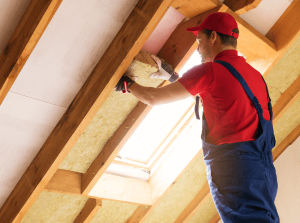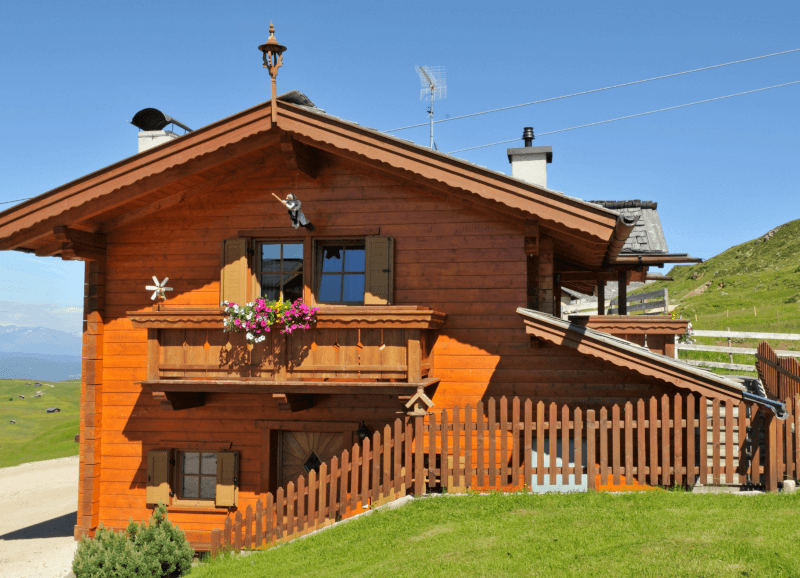Insulation can be one of the more complicated aspects of construction work. People don’t always seem to agree on what is the best material, and what is and isn’t a good insulator—so what about wood?
Wood is a naturally good insulator. It’s naturally porous and able to retain and trap warm air in the winter. It does exhibit relatively lower thermal conductivity compared to other materials. Conductivity can also increase when wood gets wet. It is a reasonably good insulator in the right climate.
Wood wouldn’t still be so commonly used as a building material if it had no capacity whatsoever for insulation. It is naturally good at keeping in the heat, though not as well as many stronger or synthetic materials. Pound for pound, though, it can be considered a good insulator.
Read on to find out more.
Is wood a good insulator for cold?
Wood, being naturally porous, is a good insulator because the fibre creates small air pockets to trap heat. By itself, wood won’t keep cold out entirely, but it does hold heat very well.
The catch, though, is that ‘wood’ is a very broad term. There are lots of differences in the materials. This could include how the wood has been conditioned and processed. A well-designed wooden home using quality wood can have excellent insulation. On the other hand, a poorly-designed structure will struggle to regulate temperature and provide good insulation.
Oak is generally considered the strongest and best quality wood, but other choices include Douglas Fir and varieties of pine. So, the deciding factor of how good of an insulator wood is depends. For the most part, you will find wood to be a good insulator for the cold. So long as the structure design leaves little to no room for air to enter between planks or logs.
But if wood is such a good insulator for the cold, what about warmer climates?
Is wood a good insulator in warmer climates?
Wood will largely do a good job of keeping you cool during warmer seasons or in warmer climates. But it will work better with a bit of help from other materials. The wood will trap summer heat in the same manner that it traps heat in winter. The warm weather will enter the wooden pores and become trapped in the small spaces. This can make the room inside quite warm. But traditional wooden houses would be combined with stone and concrete floors. These factors would help keep the inside of the house cooler.
This isn’t as common anymore, so there are things you can do to help with the insulation of wood in summer.
Firstly, reflective roofing and reflective paint jobs are good ideas. These materials cause a lot of heat to bounce off the surface of your house before the wood has a chance to absorb it. Paint reflective coatings over the top of your wooden house to support it with regulating temperature in the summer.
I know we said it isn’t as popular anymore, but cement flooring is still a good method to help wood insulate in summer. A slate or cement flooring absorbs heat during the day and filters it out during the night much better than wood. It will help keep your floors cooler which can, in turn, keep the walls and house cooler. This is a great idea for those who live in extremely hot climates. But also cooler climates because stone and bricks are good insulation.
Wood will insulate well enough in hot climates but having some other materials such as concrete in the house will help a touch more. With this in mind, do we need to have added insulation for wooden houses?
Should wooden houses have added insulation?
Even though wood can insulate well against cold weather, most wooden homes will still have added insulation. This is just an extra precaution to keep you and your family warm when necessary. It is especially a good idea if you live in very cold climates. You won’t be worried about the icy air slipping through the wooden pores with added insulation. This is kind of similar to how we add insulation to brick houses and also use mortar as a block for air. When bricks are laid properly with quality bricklaying tools, then support by insulation, the regulation of temperature is the best. Bricks and wood by themselves will do the trick, but added insulation makes it that bit better.
 One factor to consider before adding insulation, though, is how much time you will spend in the house. If it is your home or a house you visit regularly, you will probably want to invest in extra insulation. This is just because the house is actually being used and it will be worth your money.
One factor to consider before adding insulation, though, is how much time you will spend in the house. If it is your home or a house you visit regularly, you will probably want to invest in extra insulation. This is just because the house is actually being used and it will be worth your money.
If it is just a holiday house, you may not feel as inclined to add extra insulation. We’ve been through the fact that wood can insulate well enough on its own. Added insulation isn’t a necessity, just a bonus.
The most common method for adding insulation to a wooden house is via the use of fibreglass or mineral wool. These are more or less universal in construction work nowadays. They can typically be applied to a board set within the wall. Wooden houses also often lose a great deal of their heat through the floor and the roof, so it’s good to insulate those, too.
The other most common option is polyurethane foam. This kind of foam is highly elastic, meaning it again has plenty of space to trap hot air within it.
So, all this said, what exactly makes a material a good insulator?
What makes material a good insulator?
This question gets a bit more into the weeds of the science of the matter, but it’s pretty useful stuff to know, anyway. Think of it like this. All particles in any object are constantly in motion. How hot or cold something is depends on how fast its atoms are vibrating.
The best insulators are materials whose particle structure is not easily disrupted, and whose particles are held rigidly in place in their atomic structure.
When the particles are stuck rigidly together, and cannot easily move around, there is a great deal less energy transfer—meaning heat does not escape.
Things mentioned like wool, foam, fibreglass—all of these materials have incredibly strong bonds. Weakly bonded materials, like metals, are excellent conductors, allowing heat and energy to flow freely in and out of them.
Basically, the small pores of wood help to trap the heat and cool in the air, slowing down their movements. Because wood particles are stronger than air, it can help regulate the release of the air. This keeps the room warm or cold. So, rather than filtering straight through, air particles are dispersed slowly across a day.
Wood is a great building option with its strength and availability. But recently, brick veneer has become a popular option for houses too. So, what do you need to know about brick veneer? We have the answers for you! We can also give you an insight into the lifespan of a house. Paragon Masonry Tools is here to help with your bricklaying and masonry needs.



